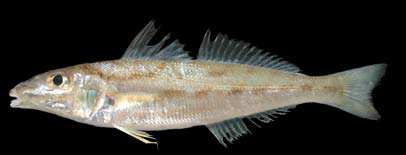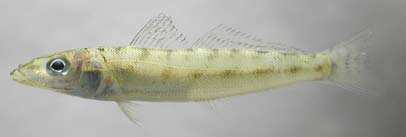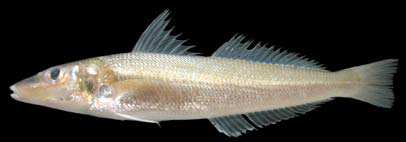SILLAGINIDAE
Sillago (Smelt, Whitings)
By Ukkrit Satapoomin
 Sillago aeolus |
 Sillago intermedius |
 Sillago sihama |
|
Moderate-sized (to 50 cm), elongate fishes. Opercle with a small sharp spine; lower part of preopercle horizontal. Snout long and conical. Mouth small, terminal; end of upper jaw sliding below preorbital bone. Teeth villiform, in broad bands; small teeth on roof of mouth restricted to anterior part of vomer, none on palatines. Two separate dorsal fins, the first with IX-XII slender spines; the second with I spine and 16-27 soft rays; anal fin long, with II weak spines and 14-27 soft ray. Scales small, ctenoid; lateral line slightly arched. Swimbladder frequently complex. Color: silvery to sandy gray or green, sometimes with black spots on body and pectoral fin base. Similar families occurring in the area. Branchiostegidae: a single continuous dorsal fin; mouth large with fleshy lips. Pinguipedidae (=Parapercidae, Mugiloididae): dorsal fin spines short; spinous dorsal fin sometimes joined to soft dorsal fin; pelvic fin base in advance of pectoral fin base. Remarks. Sillaginids are inshore, bottom-dwelling, schooling fishes with a few species found in deeper water to about 180 m. They frequently enter estuaries, penetrating into fresh water for brief periods. They feed mainly on benthic or epibenthic organisms. |

|
|